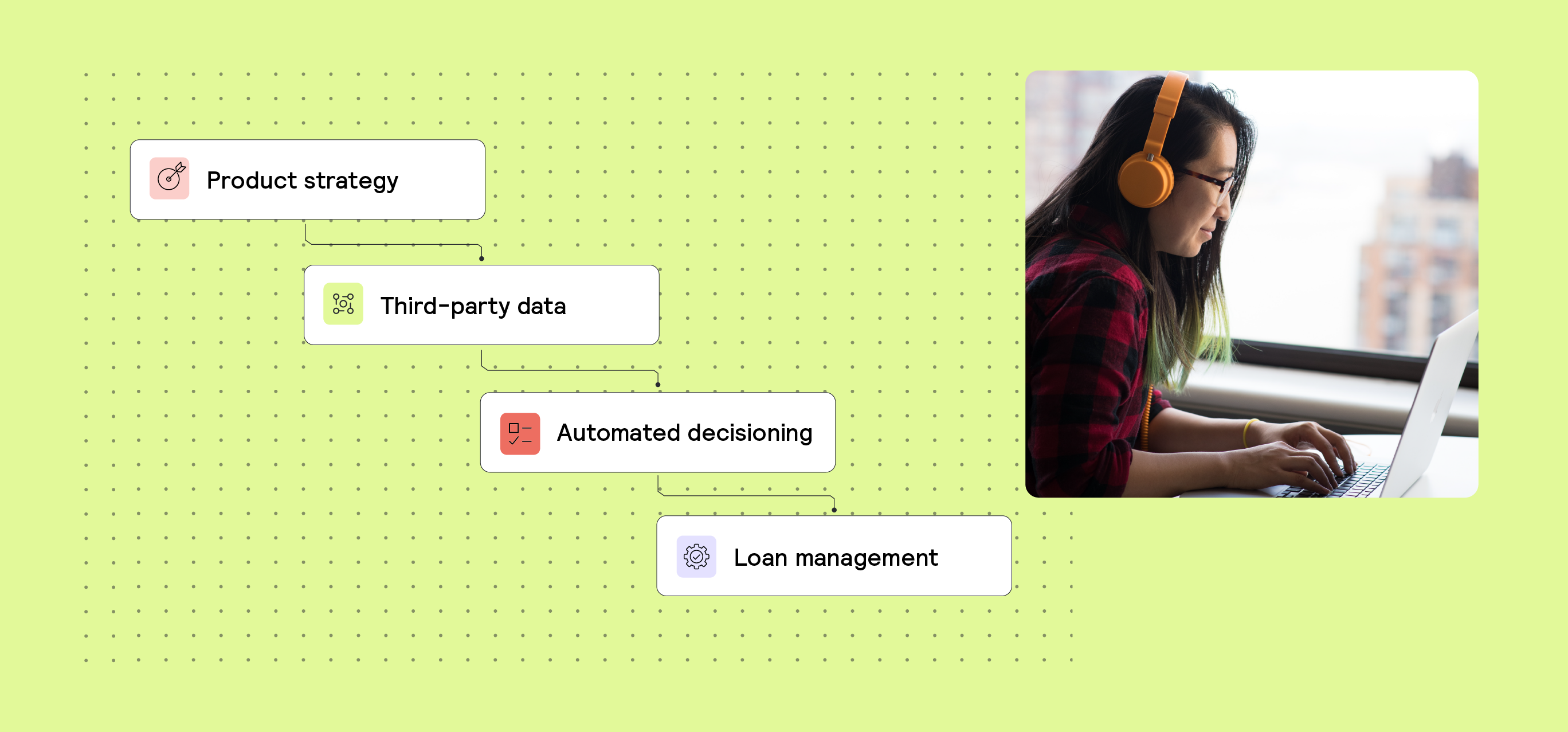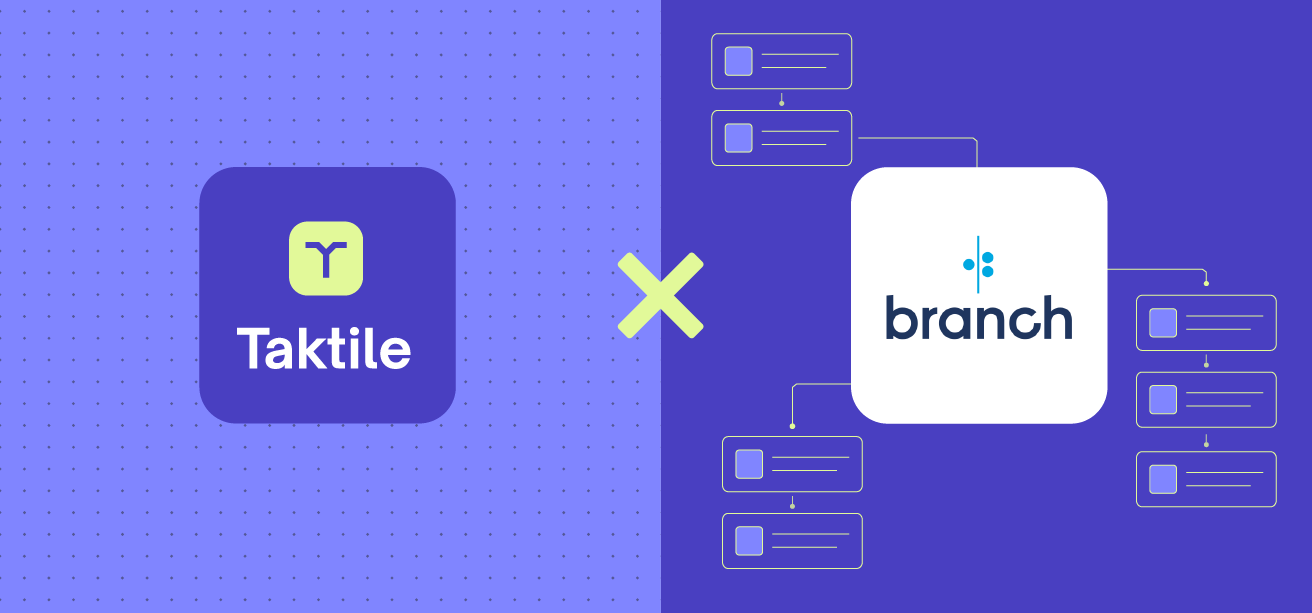Data, Lending 4 min read
How novel data sources help lenders drive profit growth

Key takeaways
What data sources are lenders using in credit decisioning?
What should lenders consider when choosing data sources?
How to start using data sources to make better credit decisions
As high-interest rates continue to put pressure on the global economy, the biggest challenge lenders face today is profitability.
The best opportunity lenders have to increase profitability is through their risk selection: deciding who to give loans to and at what price. So for lenders to stay ahead in the current environment, they need to be able to continuously adjust their risk decisioning. However, to do this effectively, it has to be done in a data-driven way.
By leveraging trustworthy data sources in their decision processes, lenders can make accurate and informed credit assessments and automate them at scale. As a result, they can lower their loss rates, grow their existing products in a risk-controlled way, and offer new lending products confidently.
This article focuses on the most valuable data sources lenders use today and how they integrate them to drive profitable growth.
Key takeaways
- State-of-the-art lenders are leveraging novel data sources to optimize credit decisions and increase profitability in today’s high-interest rate environment
- In consumer lending, credit bureau data is the most established data source providing lenders with an immediate understanding of a borrower’s credit history
- For consumers with limited credit history and small business loans, lenders are increasingly using open banking data to assess financial behavior and make more inclusive credit decisions
- In addition, advanced SME lenders are connecting to accounting data providers to get real-time insights into a company’s financial standing and provide loans to a broader pool of companies
- In markets that are underserved by traditional financial institutions where traditional financial data is scarce, lenders are using alternative data sources such as cell phone data to lend to assess a borrower’s creditworthiness and promote financial inclusion
- To integrate these data sources into automated credit decision flows, lenders are using Taktile - a software platform that removes the guesswork in credit decisioning and supplies lenders with seamless data integrations that require zero maintenance
What data sources are lenders using in credit decisioning?
Credit bureau data
Relevant use cases: Consumer and commercial lending
Credit bureau data is one of the most established data sources lenders have at their disposal. Lenders can immediately understand a borrower’s financial history by reviewing credit scores and credit report data. Since lenders are often required to check this information before approving a loan, it tends to be the first data source lenders use in decision-making.
The key piece of a credit profile is a credit score, such as a FICO (United States) or SCHUFA (Germany) score. Calculated based on a borrower's previous credit behavior, a credit score indicates the chances of a borrower not paying back a loan.
However, if borrowers have little to no credit history, their credit score will be low by default. Therefore, lenders often combine scoring data with credit report data that includes detailed information on all loans a borrower has obtained to get more granular insights into a customer’s financial history and past delinquencies. These details allow them to distinguish between applicants with no credit history and those with a history of not repaying their loans on time.
To integrate this data into decision-making, lenders use data providers such as CRS, who collect and aggregate credit bureau data from all major credit bureaus in the United States. To take it a step further, lenders can also leverage software providers that enable them to use this data directly when building automated decision flows to carry out these checks at scale.
For example, Taktile enables Nelly to launch its first lending offering quickly and takes care of all the necessary data integrations so Nelly does not have to.
Open banking data
Relevant use cases: Consumer and commercial lending
Until recently, making an accurate risk assessment of customers with limited credit histories required manual data gathering or was simply impossible. Open banking has changed that.
Using open banking, lenders can directly access a customer’s bank account data and gain real-time insights into their financial situation - regardless of their credit history. As a result, lenders are driving a new wave of financial inclusion across multiple borrower segments, such as immigrants, young people, and freelancers.
While open banking offers rich insight into a customer’s current financial status, bank account data needs sorting and aggregation before it can produce meaningful insights. This is because raw transaction data has to be transformed into actionable KPIs, such as cash flow forecasts.
Fortunately, there are software providers that go beyond only providing raw transaction data and interpret this data for lenders. Plaid is the world’s largest open banking provider, delivering lenders with raw data and off-the-shelf “signals” about customer financial behavior.
Lenders can also leverage decisioning platforms like Taktile to go one step further and create custom signals that are more predictive of the financial health of specific customer segments, such as pre-revenue start-ups.
For example, Moss, a B2B FinTech offering SME lending products, uses Taktile to create highly predictive underwriting signals for their specific customer segments from raw transaction data supplied by open banking providers. As a result, Moss is driving financial inclusion among SMEs in Europe, which traditional financial institutions have historically underserved.
Business accounting data
Relevant use case: SME lending
When it comes to SME lending, credit bureau data tends to be more scarce for two reasons. Many countries simply do not have credit bureaus for businesses. Even if they do, newer businesses often don’t have established credit histories. In addition, audited financial statements of older companies that may be available on government-based company registries can be up to 18 months old.
The rapid adoption of accounting software providers such as Xero provided a new opportunity for lenders. Plus, it allowed accounting data aggregators to connect to these software providers and enable lenders to use real-time accounting data (such as Profit and Loss Statements, balance sheets, and more) to understand a business’s financial standing instantly.
Through the level of detail that real-time accounting data provides, lenders can better assess the creditworthiness of younger and smaller companies and provide them with highly competitive loan offers.
The most established vendor helping lenders improve their underwriting capabilities for SMEs is Codat, which combines accounting data with open banking data to create powerful insights that lenders can integrate into their decision-making.
Alternative data sources
Relevant use cases: Consumer and commercial lending
In places where people have limited access to traditional financial services, lenders often cannot use credit scoring and open banking data to assess the risk of new borrowers. Instead, they are turning to alternative data sources that provide new insights and enable lending to these historically underserved customer segments.
For example, cell phone data, such as device positioning, usage, and personal connections, is a fast-growing alternative data source that helps lenders identify fraudulent behavior and assess the creditworthiness of potential customers.
Given that it is very complex to extract and make sense of cell phone-based data, lenders usually need to partner with software providers to generate these insights for them. CredoLab is one vendor providing underwriting signals from cell phone data, enabling lenders to expand into untapped customer segments with confidence. Or instead, lenders can use automated credit decisioning platforms.
For example, Branch, a microlender in emerging markets, uses Taktile to host machine-learning algorithms that analyze thousands of data points generated from smartphone data to provide instant loan offers to their customers. In doing so, Branch is at the forefront of financial innovation in underserved communities across Africa and India.
What should lenders consider when choosing data sources?
Choosing the right data source depends on who your customer is. For example, if you have a lending product for older, wealthier customers, you may only need to look at credit bureau data to assess their risk effectively. But what about customers without established credit histories? With students, for example, lenders may need to leverage alternative data sources like open banking.
In practice, lenders create a cascade of data sources, where they call multiple data providers in a sequence depending on the information required to assess risk for each customer.
Finding the right balance between optimizing risk assessment, the cost for each additional data source and borrower experience is key. When leveraging more than one data source, it is important to consider any additional steps it will induce for the applicant (such as logging into their bank account through open banking). This may deter customers from completing the loan application process. So ideally, you only want to use multiple data sources when you cannot get an accurate enough risk assessment from the first one.
How to start using data sources to make better credit decisions
Adding a data source to your credit decisioning process requires time and effort to implement and maintain. Plus, deriving meaningful insights from them can be challenging.
Generally, the more valuable data sources are, the more difficult they are to use. The reason is simple: data sources that provide vast amounts of raw data (such as bank transactions in open banking) require significant amounts of processing to generate predictive KPIs that lenders can use in credit decisioning. Given the immense burden this process places on internal engineering teams, it is critical to choose a technology provider that simplifies this process.
To alleviate this burden, lenders worldwide are using Taktile, a software provider that removes the guesswork in credit decisioning and supplies lenders with seamless data integrations that require zero maintenance.
From ready-to-use credit bureau data to highly customized KPIs generated from raw data, Taktile takes care of the implementation for you. Even more, decision-makers can use Taktile’s no-code interface to build, test, and adjust automated decision flows to make data-driven decisions at scale that drive profitability.





